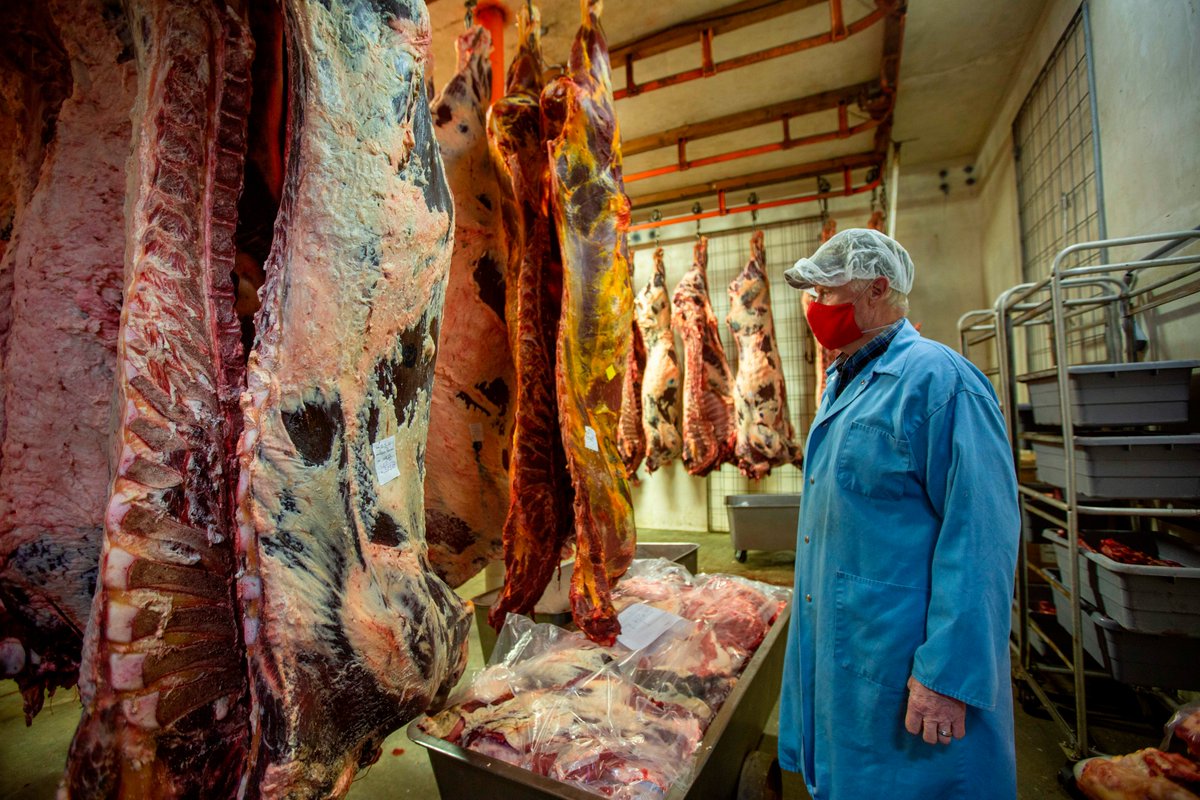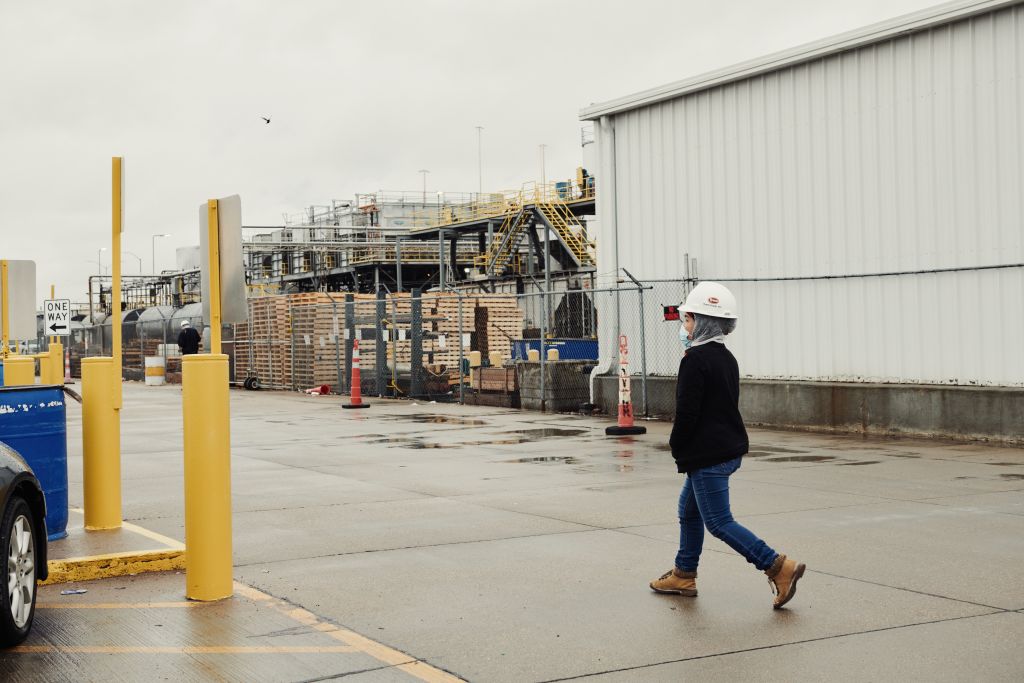
At a time when most major companies are working on plans to cut their carbon emissions, one of the darlings of green investing is working to increase its emissions footprint bloom.bg/3umtBXJ
Not only are Tesla's total emissions set to grow — an inevitable consequence of growth in our carbonized world — but the amount of pollution each of its cars generates will, too, thanks to:
🇨🇳An explosive expansion in China
🇮🇳A planned car plant in India bloom.bg/3umtBXJ
🇨🇳An explosive expansion in China
🇮🇳A planned car plant in India bloom.bg/3umtBXJ

Carmakers’ emissions include the pollution their vehicles emit while they’re being driven.
Thanks to all the gasoline and diesel that gets burned over the lifetime of the cars they sell, Volkswagen is responsible for more emissions than oil producer Total bloom.bg/3umtBXJ
Thanks to all the gasoline and diesel that gets burned over the lifetime of the cars they sell, Volkswagen is responsible for more emissions than oil producer Total bloom.bg/3umtBXJ

Electric vehicles like those sold by Tesla are at a substantial advantage.
They’re so much more efficient in converting produced energy into vehicle power that even in coal-heavy grids like China’s they’re more efficient than the gasoline equivalent bloom.bg/3umtBXJ
They’re so much more efficient in converting produced energy into vehicle power that even in coal-heavy grids like China’s they’re more efficient than the gasoline equivalent bloom.bg/3umtBXJ
But not all electric cars are equal:
⛽️Petrol car emits 284 grams of CO2 per km
🔋EV with a battery produced and charged in an average EU nation: 88 grams
🔌EV charged in a country with a low-carbon grid like Sweden: 50 grams or less bloom.bg/3umtBXJ
⛽️Petrol car emits 284 grams of CO2 per km
🔋EV with a battery produced and charged in an average EU nation: 88 grams
🔌EV charged in a country with a low-carbon grid like Sweden: 50 grams or less bloom.bg/3umtBXJ

If you use a proxy for a high-emissions grid, though, the picture changes substantially.
A car with a battery made in China and charged in Poland, where coal makes up about 2/3 of the electricity mix (like in China and India) emits 193 grams of CO2 per km bloom.bg/3umtBXJ
A car with a battery made in China and charged in Poland, where coal makes up about 2/3 of the electricity mix (like in China and India) emits 193 grams of CO2 per km bloom.bg/3umtBXJ

An essential element of electric vehicles is that they’re able to switch to lower-carbon fuels over the course of their lifetimes, as heavily-emitting power plants are disconnected from the grid and replaced with renewables bloom.bg/3umtBXJ 

That decarbonizing process is likely to be quite rapid in developed countries.
However, in the two countries where Tesla hopes to catch the next leg of growth -- China and India -- it’s going to be unusually slow bloom.bg/3umtBXJ
However, in the two countries where Tesla hopes to catch the next leg of growth -- China and India -- it’s going to be unusually slow bloom.bg/3umtBXJ

So, the more cars Tesla sells in China and India, the higher the intensity of its emissions — emissions per vehicle sold — will be.
Maybe it doesn't matter: An electric car sold anywhere in the world is likely substituting for a combustion engine bloom.bg/3umtBXJ
Maybe it doesn't matter: An electric car sold anywhere in the world is likely substituting for a combustion engine bloom.bg/3umtBXJ

However, this is the sort of information that climate-focused investors who’ve driven Tesla’s stock price so high ought to be given, so they can make their own decisions about how their shareholdings reflect their own emissions-reduction commitments bloom.bg/3umtBXJ 

Unfortunately, Tesla doesn’t disclose:
🏭Scope 1 emissions (from on-site power consumption)
🔌Scope 2 (from purchased electricity)
🚗Scope 3 (emissions from the cars it sells)
⚡️Electricity consumption
bloom.bg/3umtBXJ
🏭Scope 1 emissions (from on-site power consumption)
🔌Scope 2 (from purchased electricity)
🚗Scope 3 (emissions from the cars it sells)
⚡️Electricity consumption
bloom.bg/3umtBXJ

Its behavior indicates that this isn’t a priority.
Four years after production started at its Gigafactory battery plant in Nevada, the solar panels that were to cover its roof and help make it independent of the gas-fired grid are still being added bloom.bg/3umtBXJ
Four years after production started at its Gigafactory battery plant in Nevada, the solar panels that were to cover its roof and help make it independent of the gas-fired grid are still being added bloom.bg/3umtBXJ

Companies accelerating the transition to clean energy while providing poor information on their carbon footprint are better than nothing.
But one with a market cap equivalent to the S&P’s entire oil and gas sub-index should be capable of full disclosure bloom.bg/3umtBXJ
But one with a market cap equivalent to the S&P’s entire oil and gas sub-index should be capable of full disclosure bloom.bg/3umtBXJ

• • •
Missing some Tweet in this thread? You can try to
force a refresh














